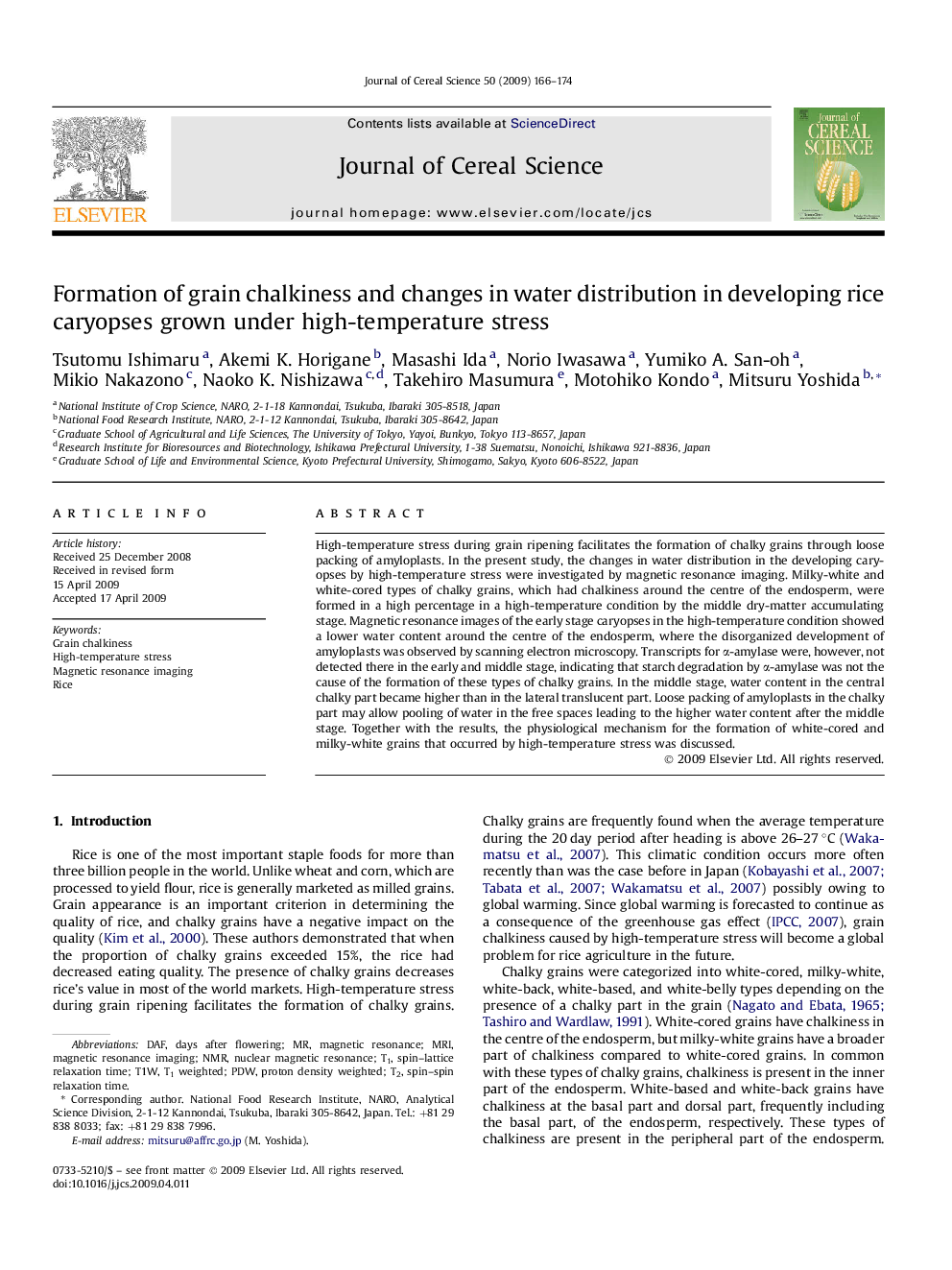| Article ID | Journal | Published Year | Pages | File Type |
|---|---|---|---|---|
| 4516480 | Journal of Cereal Science | 2009 | 9 Pages |
High-temperature stress during grain ripening facilitates the formation of chalky grains through loose packing of amyloplasts. In the present study, the changes in water distribution in the developing caryopses by high-temperature stress were investigated by magnetic resonance imaging. Milky-white and white-cored types of chalky grains, which had chalkiness around the centre of the endosperm, were formed in a high percentage in a high-temperature condition by the middle dry-matter accumulating stage. Magnetic resonance images of the early stage caryopses in the high-temperature condition showed a lower water content around the centre of the endosperm, where the disorganized development of amyloplasts was observed by scanning electron microscopy. Transcripts for α-amylase were, however, not detected there in the early and middle stage, indicating that starch degradation by α-amylase was not the cause of the formation of these types of chalky grains. In the middle stage, water content in the central chalky part became higher than in the lateral translucent part. Loose packing of amyloplasts in the chalky part may allow pooling of water in the free spaces leading to the higher water content after the middle stage. Together with the results, the physiological mechanism for the formation of white-cored and milky-white grains that occurred by high-temperature stress was discussed.
